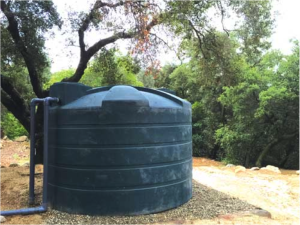Tomorrow, August 20 – Proposition 1 Funding Meeting.
There will be a special Proposition 1 funding meeting tomorrow, August 20, 2015 from 9:00-11:00 am to discuss three of the Prop 1 funding opportunities that are open now, and to explore project ideas and potential collaboration. The meeting will be held in the Topping Room of the EP Foster Library, 651 E. Main Street, Ventura. The three Prop 1 grant solicitations that we’ll be discussing are:
1. Watershed Restoration Grant Programs, Department of Fish and Wildlife. Due Sep 16. Funding must go to projects of “statewide importance.”
2. California Stream Flow Enhancement Program, Wildlife Conservation Board. Due Sep 30. Eligible: Planning, implementation, acquisition, and scientific studies, monitoring, and assessments. There is no minimum or maximum grant amount. Match not required but funding leverage is a scoring criteria.
3. State Coastal Conservancy. Due Sep 30. Priorities for this funding: water sustainability, protecting and enhancing anadromous fish habitat, wetland restoration, and urban greening.
Anyone with ideas for pursuing this funding for Ventura River watershed projects is encouraged to attend. Please read through the grant solicitations (links above) before the meeting so you have some familiarity with the type of projects the grantors are looking for, and the grant conditions.
Sep 3 Council Meeting Agenda
The next meeting of the Watershed Council will be on Thursday, September 3, 2015, from 9:00 am to 12:00 pm, in the Topping Room of the EP Foster Library, 651 E. Main Street. Here is the agenda. More information on the watershed coordinator staffing will be sent out next week.
Oak Tree Care During Drought
As we remove turf and cut back on landscape irrigation in response to the drought, it is important to consider the impacts these actions have on the many coast live oak trees that grace the watershed’s urban landscapes.
Oaks provide many services and values: they cool the air and lessen the need for air conditioning; they help to capture and infiltrate rain water and keep soil in place; they provide abundant habitat; they add economic value to our communities; and their presence just makes us feel better. Drought stressed trees are more susceptible to pest infestations; they are more at risk of losing limbs or falling over; and dead trees – especially lots of them at once – present a significant fire hazard.
While the instructions for oak tree care under more normal conditions are to avoid summer irrigation, that is not the case right now, because the deep reserves of moisture that the trees typically rely upon are not there.
This UC Cooperative Extension website, Help an Oak Tree Tolerate Severe Drought, outlines important oak care information. Local farm advisor and watershed resident Jim Downer also wrote a helpful article, The Effects of Drought on Shade Trees when we were just two years into the drought. His article offers more detailed information, including how to tell if your tree is drought stressed.
Each situation is different (size of tree, soil type, etc.), so do read the articles, but in general the advice is: Water very deeply and slowly (so that soil is wetted several feet deep), space irrigations out by at least a month; keep the water well away from the trunk; do not fertilize or prune drought-stricken trees; place a thick layer of mulch on top of the soil out to the drip line of the tree, but well away from the trunk.
Although it will take some precious water to keep our urban oaks alive, without them, we would be hard pressed to provide the air cooling, water trapping, and soil holding services they provide. And it takes a long time to replace a mature oak tree.
If you have questions about the care of an oak tree, you can call the Ventura County Master Gardener helpline at 805/645-1455. Ojai Trees is another local resource.
Thacher School Aiming to Reduce Water Usage by 70 Percent
Reprinted with permission from Ojai Valley News. Story by Misty Volaski. Aug 11, 2015
Less than 24 hours after The Thacher School finished installing a rainwater collection system, Tropical Storm Dolores swooped in to help them try it out. She courteously dumped more than an inch of rain on the campus, allowing it to collect 5,000 gallons of water in one weekend.
Talk about perfect timing. “We never expected to be given a chance to test it so soon,” said Chris Land, director of communications for Thacher. The school had played host to a water conservation class attended by several Thacher staff members, as well as two dozen individuals from across the state.

A summer storm filled this storage tank with 5,000 gallons of water in late July.
Their final project was to install this rainwater collection system — and they did it just in time. “The system is fairly simple and works by using the existing rain gutters on the roof of one of our horse barns to collect the water that falls on that roof, and channel it into piping that fills a 5,000 (gallon) water tank nearby where it can be stored for later use,” said Land.
Thacher director of facilities, Ed Bennett, said the potential for expanding the program are huge. “This was only one half of one roof,” he said of the current system. “There are 14 others (barns) … All together, they’ll enable us to collect a half-million gallons of water.”
Land said the school is already working to secure funding to do just that. “We are currently pursuing a $975,000 state grant that would allow us to apply this approach to all of our existing barn buildings,” said Land. “This water could then be used to wash our horses and supply them with drinking water. Just three inches of rain would provide enough water to supply our horse program for a whole year.”
This is the latest in an ongoing series of eco-friendly upgrades Thacher is implementing. Out on the main athletic field, an underground irrigation system, installed last year, is now using 60 percent less water. And in the private school’s eight dormitories, a laundry-to-irrigation system has also been installed. “We’re able to capture almost 600,000 gallons per year, and that’s kind of a conservative estimate,” said Bennett, adding that students have already gotten used to using the required environmentally friendly soaps.
Similar systems are being planned for faculty residences, as well. The school hasn’t overlooked the teaching opportunity the graywater system presents. “We’ll have signage that’ll go up in the laundry rooms that will actually show them where that water’s going — to this tree, and this tree,” Bennett said. And that wasn’t the only educational opportunity on which the school capitalized. Student Sasha Ongley helped Bennett with another water-saving project in February, installing low-flow shower heads, dual flush toilets and low-flow aerators on faucets in all the dorms. More water meters were also installed to track progress. “We were able to measure from one week to the next what the impact was,” Bennett said. “It was interesting that some folks said, ‘Well, low-flow shower heads, that’s going to mean they’ll take longer showers,’ but as soon as we put in the low-flow (heads), we got 30 percent reductions (in water use),” Bennett said.
Ongley turned the project into a sort of competition by posting graphs showing how much water each dormitory was saving. “That helped a lot,” Bennett added. “That’s the key thing, to be able to have that data.”
Looking ahead, Bennett plans to take it a step further by installing shower-to-toilet graywater systems. “Right now, we have reduced water use from last year by 43 percent,” said Bennett. Once all the water-saving projects are complete, “We’ll be reducing our water usage by 70 percent.” The interesting — and exciting — thing, he noted, is “If you go around campus, you’ll see we didn’t do it (save water) by just turning everything brown … we want to be water resilient.”
And it’s not just water Thacher is saving. They’ve already completed several smaller projects aimed at energy efficiency, such as improving electrical systems and installing LED lighting, high efficiency pumps and motors, as well as high efficiency heating and air conditioning equipment.
And there are also plans to install a 2,898-panel photovoltaic solar array, which Thacher hopes to have completed sometime next year. “Once fully funded and installed,” Land explained, “the new array is expected to supply as much as 90 percent of Thacher’s electricity needs and save the school more than $175,000 per year in energy costs.”
School officials got input and help from students, alumni parents and faculty for the project, truly making it a schoolwide effort, he added.
“We expect the new array to generate over 1.22 million kilowatts per year,” explained Bennett. “That is enough to reduce our carbon footprint by 35 percent.”
Sure, all this requires an economic investment, Bennett and Land acknowledged, but they’re offsetting costs through grants — and through utility savings down the road. “In addition to their environmental good,” Land said, “such efforts help protect Thacher from the impact of the uncertain energy costs.”
“Economically, it’s a really good payback,” added Bennett.
(If you missed Ed Bennett’s presentation at the last Council meeting on Thacher’s onsite wastewater treatment system and other technologies, it is now posted on the Council’s website.)
